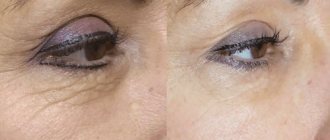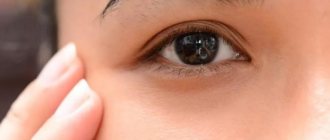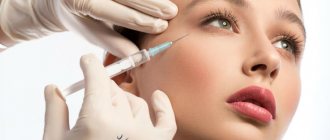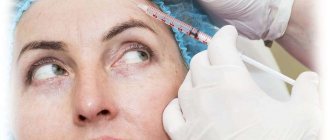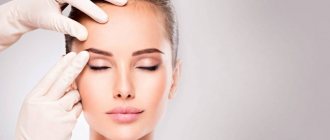Sometimes a crooked and unsightly shape of the nose causes many complexes to arise in adolescents, as a result of which they cannot normally exist in society and communicate with peers. Sometimes plastic surgery is the only way to gain confidence in yourself and start a new life. In this case, it is better to consult a specialist, and if there are no contraindications, perform rhinoplasty on the child.
Any qualified specialist will advise performing the operation on patients over the age of eighteen.
This opinion arose for the following reasons:
- At the age of 18, the tissues of the nose are fully formed and will no longer actively develop. This fact guarantees a good completion of the procedure without any consequences.
- This is an adult age, so consent will not be required.
- It is at this age that a teenager can sensibly evaluate all the criteria and make an informed decision.
Each doctor has his own opinion, but many agreed that this age is different for boys and girls. Girls develop faster, so they can undergo surgery as early as 13 years old, but boys a little later, at 15 years old.
But it is still necessary to wait for the moment when the structure of the bone tissues of the face is completely mature. In rare cases, rhinoplasty is performed on adolescents over 14 years of age, provided they have completed their physical growth.
This can be determined by several criteria:
- If height has reached the height of his parents, then perhaps he will no longer actively grow and there will be no further radical changes.
- shoe size if a teenager’s foot has stopped growing and the size has not increased for several years, then there is a possibility that the nose will no longer grow, and surgery can be performed.
Rhinoseptoplasty
Rhinoseptoplasty is a type of surgical intervention, the essence of which is to correct a deviated nasal septum, as well as change the shape and appearance of the nose.
But children who have significant nasal defects and various deformities undergo such intervention much earlier. It should be performed if there are aesthetic deformations, the nasal septum is damaged, or breathing becomes very difficult.
Deformation of the septum can appear in early childhood; this will manifest itself as disturbances in the respiratory system. They can inhibit normal growth and development of the nose.
What are the age restrictions for rhinoplasty?
The operation can be performed on patients over 16 years of age, but with written permission from their parents. At this point, young people reach puberty and the body, including the face, ceases to undergo changes due to the process of growth. However, the bones of the skull are finally formed by the age of 20, so surgeons advise focusing on this age, or rather the period from 20 to 35 years, while the body is young and has a lot of strength to recover. From the age of 40, the healing and regeneration processes slow down - plastic surgery is less desirable.
The upper limit is 70 years, after this age rhinoplasty is not performed.
Rarely and for medical reasons (if there is an obstruction to normal breathing), operations are performed on patients under 16 years of age.
What are the age restrictions for rhinoplasty?
First of all, this is due to the physical development of a teenager. When growth is still ongoing, changes in the nose can further lead to disruption of facial proportions. Usually rhinoplasty is performed on young people upon completion of high school. Young people stop actively growing and reach a certain emotional maturity - it is necessary that the patient understands that changes in appearance will be permanent.
Children undergo rhinoplasty only for medical reasons, for example, anomalies in the development of the nose, difficulty breathing, neoplasms of various etiologies, trauma, i.e. when the health and normal development of the child is in danger
Age restrictions exist only depending on the purpose of rhinoplasty
- - aesthetic
- - medical
The medical indicators for the operation are quite extensive. There is a certain percentage of children who are born with an open palate. To do this, the operation is performed immediately after birth; this is a vital operation; without it, the baby will not be able to perform a number of vital functions. Such operations affect not only the palate, but also part of the nasal septum and facial bones.
Are there any scars left after the surgery?
The site of any incision is replaced by connective tissue, which is a scar. It is impossible to avoid its formation, but what is important is where it is located and how strongly it is expressed. So, after closed rhinoplasty there are no external traces of the intervention; after open rhinoplasty, a barely noticeable scar remains near the columella and under the nose. Thick and dark skin is more susceptible to scarring. Age also affects the likelihood of scars appearing - the older the patient, the slower the soft tissues heal and the more noticeable the scars.
Scars after rhinoplasty and how to care for them
Depending on the type of nasal surgery, reconstructive procedures must be performed
After surgery there are always scars. If rhinoplasty was performed professionally, then the incision sites will be practically invisible or will be located where they cannot be seen. Scars need to be properly cared for.
The following types of scars may occur after surgery:
— keloids are the most unpleasant type of scars. They can grow, change, cause discomfort and are very noticeable on the face- — normotrophic — thin, light, almost invisible
- - internal - dense and thick, can interfere with breathing through the nose
- - subcutaneous - can appear even several months after surgery, look like tubercles
- - atrophic - look like a depression and are usually light in color
Scar care after rhinoplasty
The first thing to do is follow your doctor's recommendations. You should not self-medicate and use traditional medicine. Modern products for the care of postoperative scars are very effective. These include special ointments, phonophoresis, peeling with chemical additives, laser resurfacing, injections, and patches. The scar removal process takes several months.
It happens that rhinoplasty is performed poorly and the remaining scars also have to be removed through surgery. Already at this stage, scar tissue is removed and healthy skin is transplanted.
Swelling after rhinoplasty
Swelling of the nose and even bruising around the eyes are an integral part of rhinoplasty. Depending on the complexity of the operation and the patient’s health, swelling can even last up to several months. Before the operation, the surgeon must notify his patients about this.
There are only three types of edema:
- primary - occurs during the operation itself- - secondary - lasts about a month, manifests itself in some swelling and hardening of the nose
- - residual - barely noticeable, manifests itself in swelling of the tip of the nose and is practically unnoticeable. Lasts about a year or a year and a half
How long does it take for a nose to heal and when can you see the final result?
The healing time depends on what type of surgery was performed. On average it is 2 weeks. The final result is visible after a year, when new appearance features become apparent and fully formed. The preliminary effect can be assessed after 3 months, but it is worth remembering that the main postoperative swelling can last up to 6-12 months. Therefore, the nuances do not appear in the 3rd month.
! All types of rhinoplasty in our clinic - more information about the rhinoplasty procedure, cost, reviews, before and after photos
Until what age can rhinoplasty be performed?
Rhinoplasty is an operation that is performed only under general anesthesia . Local anesthesia is not used for it for three reasons:
- Discomfort and pain from medical procedures for the patient;
- Risk of sudden movements and other interference from the patient for the plastic surgeon;
- Unpleasant sensations from osteotomy;
- Duration of the operation – complete rhinoplasty lasts at least 2-3 hours.
In addition to undergoing a standard package of tests and examinations, before rhinoplasty the patient talks with an anesthesiologist. The anesthesiologist pays special attention to the general health of mature and elderly patients.
The reasons for refusing general anesthesia for a mature or elderly patient are the following factors:
- Severe cardiovascular diseases;
- Increased likelihood of thromboembolism during surgery;
- The presence of neoplasms and tumors of unspecified origin in the body;
- Risks of heart attacks and strokes after surgery;
- Decompensation of diabetes mellitus;
- Persistent dysfunction of the liver and kidneys;
- A large number of previous operations;
- Individual intolerance to most anesthetics (as well as angioedema, anaphylactic shock and other critical conditions provoked by drug allergies in the past);
- Coagulation disorders;
- Exacerbation of chronic pathologies.
During the consultation, a plastic surgeon and an anesthesiologist assess the condition of the body even visually - if a person looks weak, exhausted and painful, he will be denied rhinoplasty.
Teenage rhinoplasty
Nasal reconstruction is the most common cosmetic surgery procedure among American teenagers. The nose is in the center of the face and will be changed permanently by rhinoplasty. Young people, especially those in adolescence, need to understand the consequences of these changes and the implications of their decisions. Many plastic surgeons want to make sure that the teenager is emotionally stable enough to cope with the consequences of the surgery and has the right expectations about the expected results.
The results of rhinoplasty can be physically and emotionally satisfying for teenagers when their motivations and expectations are realistic. Rhinoplasty will not be a panacea for solving teenage emotional problems, but it will improve the nose aesthetically, creating harmony with other facial features. This often improves self-confidence. Patients become more socially connected with peers and get better grades in school because their new appearance gives them the confidence to succeed. Depending on the extent of the operation, the teen may miss one or two weeks of school.
Patients must reach both emotional and physical maturity before undergoing surgery.
Physical maturity is important for several reasons. Continued growth after rhinoplasty can lead to changes in the appearance of the nose. In addition, if rhinoplasty is performed at an early age, there is a risk of impaired facial growth. This can lead to flat cheekbones and even an incorrect bite.
Rhinoplasty is best done after a young person has finished growing. It is very important to answer the question at what age can nasal surgery be performed. Some surgeons believe that the earliest age for rhinoplasty for women is 13 years, and for men - 15 years. However, ideally, you should wait until the structure of the bone and soft tissues of the face has fully matured.
Although surgeons differ in their opinions regarding the early age for rhinoplasty, most surgeons believe that ages 15 to 17 years for women and 16 to 18 years for men are most appropriate.
For many years, it was common to have rhinoplasty immediately after graduating from high school. This roughly correlates with the onset of skeletal maturity for boys and girls, and also provides a degree of emotional maturity. It also provides a “fresh face” for the start into adulthood.
In rare cases, rhinoplasty can be performed on teenagers as young as 14 years old if the patient has actually completed their physical growth. For example, if a teenager is the same height as his parents, it is safe to assume that there will be no further drastic changes in height. You can determine when your nose has stopped growing using a simple but surprisingly accurate method. If the patient's shoe size last changed about two years ago, there is a good chance that the patient's nose has also stopped growing and rhinoplasty can be performed.
After operation
After surgery, patients are prescribed physical therapy, massage, taking antibiotics under the supervision of a doctor, immunostimulants, and vitamins. When such medical prescriptions are accurately followed, the likelihood of rejection is sharply reduced. However, rejections, although rare, are still possible.
The patient must remember that he will have to take care all his life not to injure the new nose, to prevent the development of sinusitis, infections in the nasopharynx, because the nasal bone, even after the most successful operation, will still not be “full”.
Rhinoplasty in adolescence
According to statistics, nasal reconstruction surgery is most popular among American teenagers.
However, gradually the trend to eliminate imperfections and/or defects of this part of the face is spreading to other countries. Indeed, this operation can be performed at a fairly young age. However, at what age can it be done safely? On this issue, the opinions of plastic surgeons are divided. Some argue that you can change facial features with rhinoplasty as early as 16 years old. Others say that this procedure is permissible to undergo only after a person reaches a fully conscious age, that is, 18 years. Still others are of the opinion that even 15-year-old teenagers can go under a surgical scalpel for the appropriate purpose.
In addition, there are divisions by gender. According to some experts, a 13-year-old girl can undergo this operation, while boys can only undergo it from the age of 15. As you can see, there is no consensus on this matter.
How old a person must be to come to an appointment with a plastic surgeon for the appropriate purpose also depends on his individual characteristics. Rhinoplasty with minimal risks can be performed only if the patient’s bone tissue has sufficiently strengthened. Each person needs a different amount of time to do this. For some, this happens at the age of 13, while for others - only at 18. A sign that the bone tissue has sufficiently strengthened is the cessation of growth. If a teenager's height does not change for 8-12 months, then he is already allowed to undergo the procedure.
However, before looking for plastic surgeons, you should think several times about the feasibility of carrying out the appropriate operation. Facial plastic surgery has one disadvantage - in most cases it can only be performed once. That is, if rhinoplasty is performed, then a changed nose will become impossible or very difficult and expensive.
According to statistics, every 5 girls/women who have had rhinoplasty subsequently regret this decision
